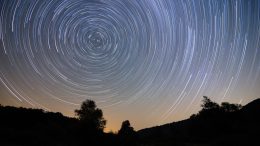It’s difficult to work in the environmental realm in 2025. In his first term, President Donald Trump rolled back more than 100 environmental laws. Now, in his second, he’s slashing funding for climate programs, firing government scientists, and weakening agencies like the Environmental Protection Agency and National Oceanic and Atmospheric Administration.
With climate change accelerating and protections vanishing, it’s easy to feel disheartened. You can have all the passion in the world to protect and preserve nature, yet those in power seem indifferent. And when they’re the ones calling the shots, it feels more and more like a losing battle to enter a field that’s disappearing before our eyes.
So what can one scientist, activist, or tree hugger do? Fighting back starts with speaking out — making the case for why our work matters.
But just as important as raising our voices is how we come together. Progress doesn’t happen in isolation; it’s fueled by collaboration.
In times of crisis, our greatest strength lies in collective action. Scientific collaboration is one of the most powerful tools we have, not just for achieving results but for maintaining a sense of purpose and momentum in the face of adversity. We can’t afford to lose what connects and empowers us.
I’ve witnessed that collaborative power firsthand through an initiative that embodies its spirit both in name and mission.
The Pacific Northwest Cooperative Ecosystem Studies Unit is a collaborative partnership dedicated to research, technical assistance, and education that enhances our understanding and management of natural and cultural resources. Established in 2000, it brings together 12 federal agencies, 19 academic institutions, four nonprofits, one nongovernmental organization, and one state agency.
It’s also a part of the larger National CESU Network: 17 regional units, each representing a biogeographic region of the United States.
Together, these units strengthen the scientific foundation for managing federal lands by providing resource managers with high-quality research, technical expertise, and educational support. Through these partnerships CESU projects drive innovative research that deepen our knowledge and improve stewardship of the natural and cultural landscapes we rely on.
The scope of this work is vast, from using remote sensing for social trails fragmenting subalpine meadows to assessing the elusive Pacific marten in Olympic National Park, modeling brown treesnake management strategies in Guam, and developing a native plant hub in Oregon. Each project tells a story of dedicated researchers working across disciplines to tackle environmental challenges.
It’s my job to tell those stories.
As the science communication specialist for the Pacific Northwest Cooperative Ecosystem Studies Unit — I know, it’s a long title — I interview our partners to help translate their work into public-facing “project highlights” that showcase their critical research aimed at protecting and preserving our natural world. Through my interviews and writing, I get a glimpse into their world — and it’s clear their contributions have profound implications for conservation.
One recurring theme stands out: Collaboration across bureaucratic boundaries leads to the most successful outcomes.
Take the East Cascades Native Plant Hub, for example. Established by the National Park Service and Oregon State University-Cascades, this initiative brings together federal agencies, tribal communities, academic institutions, and private landowners — including the Bureau of Land Management, U.S. Forest Service, U.S. Fish and Wildlife Service, and Confederated Tribes of Warm Springs. Their shared mission? Addressing critical shortages in native plant materials to support fire mitigation, invasive species control, and habitat restoration across the western United States.
It couldn’t have succeeded without the combined expertise of these diverse groups. Each contributes something essential, proving that large-scale conservation efforts don’t happen overnight — they require long-term investment, cooperation, and shared knowledge. It’s a model for how we should be tackling all our environmental challenges.
That’s why I’m so passionate about the CESU network — it’s right there in the name: Cooperative Ecosystem Studies. Sharing knowledge and expertise is the foundation of scientific progress.
For example, a project highlight I’m currently writing looks at the collaboration between University of Oregon researchers and the Park Service to study the cultural landscape of Carlsbad Caverns. When the Service suggested bringing in a cave microbiologist, the university team initially hadn’t considered the role of microscopic life in preservation. But once involved, the microbiologist’s insights proved invaluable.
One key moment came when the team faced the removal of a deteriorating historic wooden staircase, which had become a habitat for microorganisms. Without precautions, disturbing the structure could have disrupted the cave’s delicate ecosystem. The microbiologist proposed enshrouding the staircase before removal to contain dust and prevent unintended harm. After the successful removal, the team proposed using projected images to illustrate its former presence, allowing visitors to appreciate its historical significance.
This collaboration — blending scientific expertise with cultural preservation — safeguarded both the cave’s ecological integrity and historical significance. The result: A holistic approach that balances conservation and preservation, ensuring the long-term protection of our national parks.
Too often, scientific research operates in isolation, with pressure to keep discoveries proprietary. But real progress doesn’t come from competition; it comes from collaboration. Protecting our planet requires us to work together, not apart. In today’s world, where environmental threats are mounting, we can’t afford to do otherwise.
The Willamette Valley Prairie Pollinator Studies exemplify this principle. A collaboration between the Institute of Applied Ecology and the U.S. Army Corps of Engineers, this project aims to restore pollinator communities in Oregon’s disappearing prairies.
It began with the Willamette daisy (Erigeron decumbens), a federally endangered plant struggling to survive. The Army Corps, which manages land supporting the daisy, sought to improve its habitat management and understand its key pollinators. Their research uncovered an astonishing diversity of insect life — more than 100 species visiting the daisy alone. While bees were the most effective pollinators, other insects such as flies, beetles, and butterflies also played crucial roles.
This project reinforced a powerful lesson: Ecosystems are intricate, interconnected systems. Just as plants rely on a diverse web of pollinators, conservation efforts depend on a network of researchers, agencies, and communities.
The natural world thrives on collaboration — our approach to science and environmental protection should do the same.
Since 2001 the PNW CESU has launched 1,280 projects, each one advancing conservation through collaboration. The CESU National Network defines its work as providing research, technical assistance, and education to federal land management, environmental, and research agencies and their partners.
But the impact of these projects extends far beyond their official scope — they restore ecosystems, protect culturally significant lands, and deepen our understanding of the world around us.
And in a time when science itself is under threat, making that impact visible is more important than ever.
Nature itself thrives on collaboration. Just as plants depend on a network of pollinators, we depend on each other to protect the natural world.
As environmental protections are being stripped away, collaboration is more than just a tool — it’s a form of resistance.
The work of conservation isn’t solitary. It’s a collective effort, and our influence grows exponentially when we work together. Let’s take our cues from the Willamette Valley pollinators: Connect, collaborate, and ensure that the ecosystems we rely on don’t just survive but flourish.
The views expressed in this article are those of the author and do not necessarily represent the views of the Cooperative Ecosystem Studies Unit, the University of Washington, or any federal agencies.

Previously in The Revelator:
Advice for U.S. Government Scientists: Lessons Learned From the ‘Muzzling’ of Their Canadian Counterparts



